Ceramicist Jonathan Cross on crafting art from desert materials in the Mojave
Jonathan Cross’ flourishing practice incorporates local sand and stones from his base on the edge of Joshua Tree to create minimalist works with a unique patina
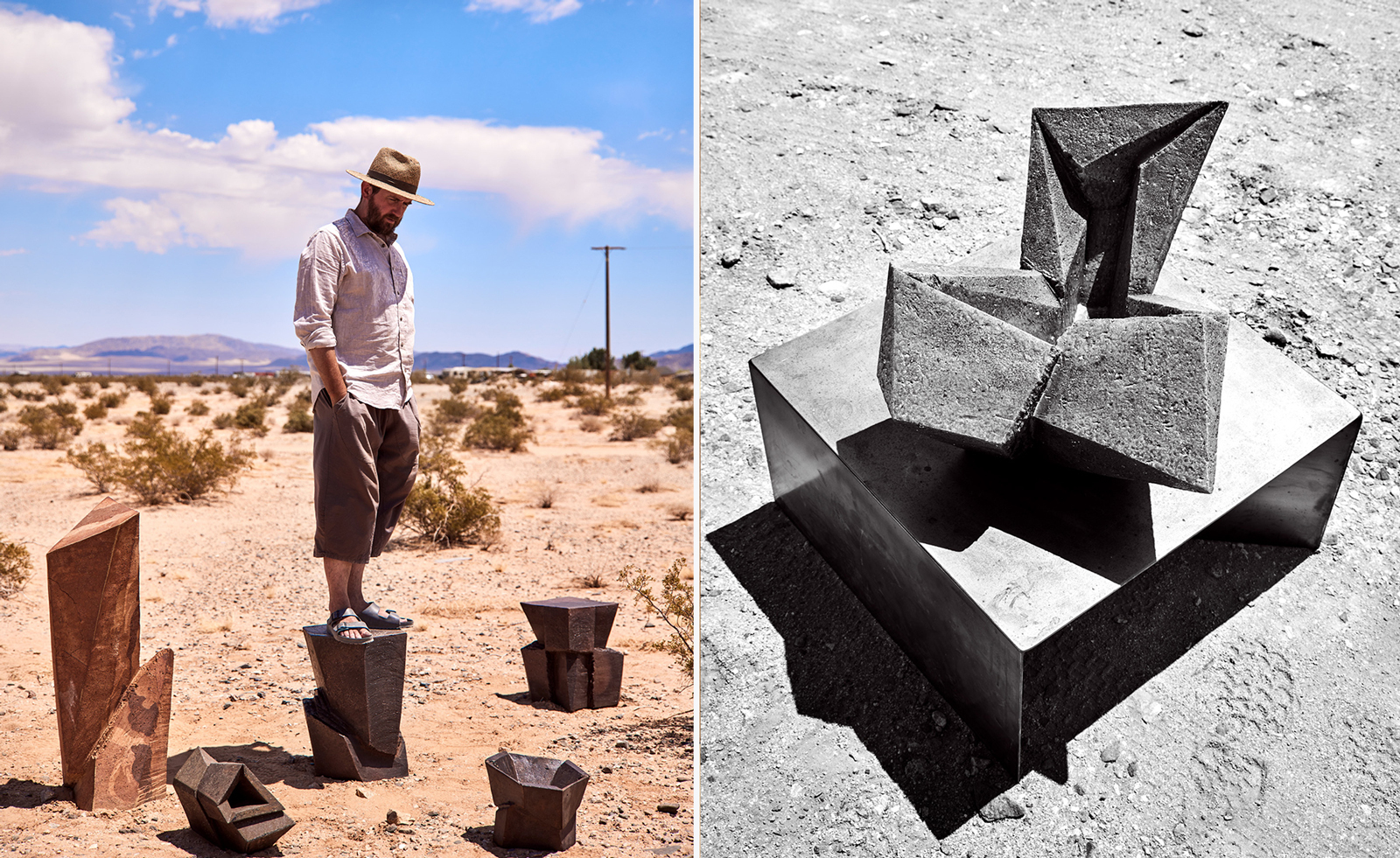
For the past ten years, the sculptor-ceramicist Jonathan Cross (featured in the Wallpaper* USA 300 guide to creative America) has called the desert home. Based in Twentynine Palms, a small city that serves as one of the entry points into Joshua Tree National Park, Cross has melded the unique nature of his surroundings quite literally into the work that he creates.
Not only are Cross’ wood-fired ceramics, vessels and sculptures made in purpose-built kilns that he maintains on his property, but their distinct coloration, texture and patina are also derived from ingredients and additions that he forages from the desert itself.
Jonathan Cross: ‘You can’t do wood-firing in the city’
‘I ended up in Joshua Tree for practical reasons,’ says Cross, recounting how he followed his wife to California after they met in college. ‘You can’t do wood-firing in the city, so I looked for a place within driving range. My brother-in-law had some property just outside of Joshua Tree and I rented that from him for about eight years, using the space on and off. I recently purchased it and now we’ve been beefing up studio space and the facilities for making work.’
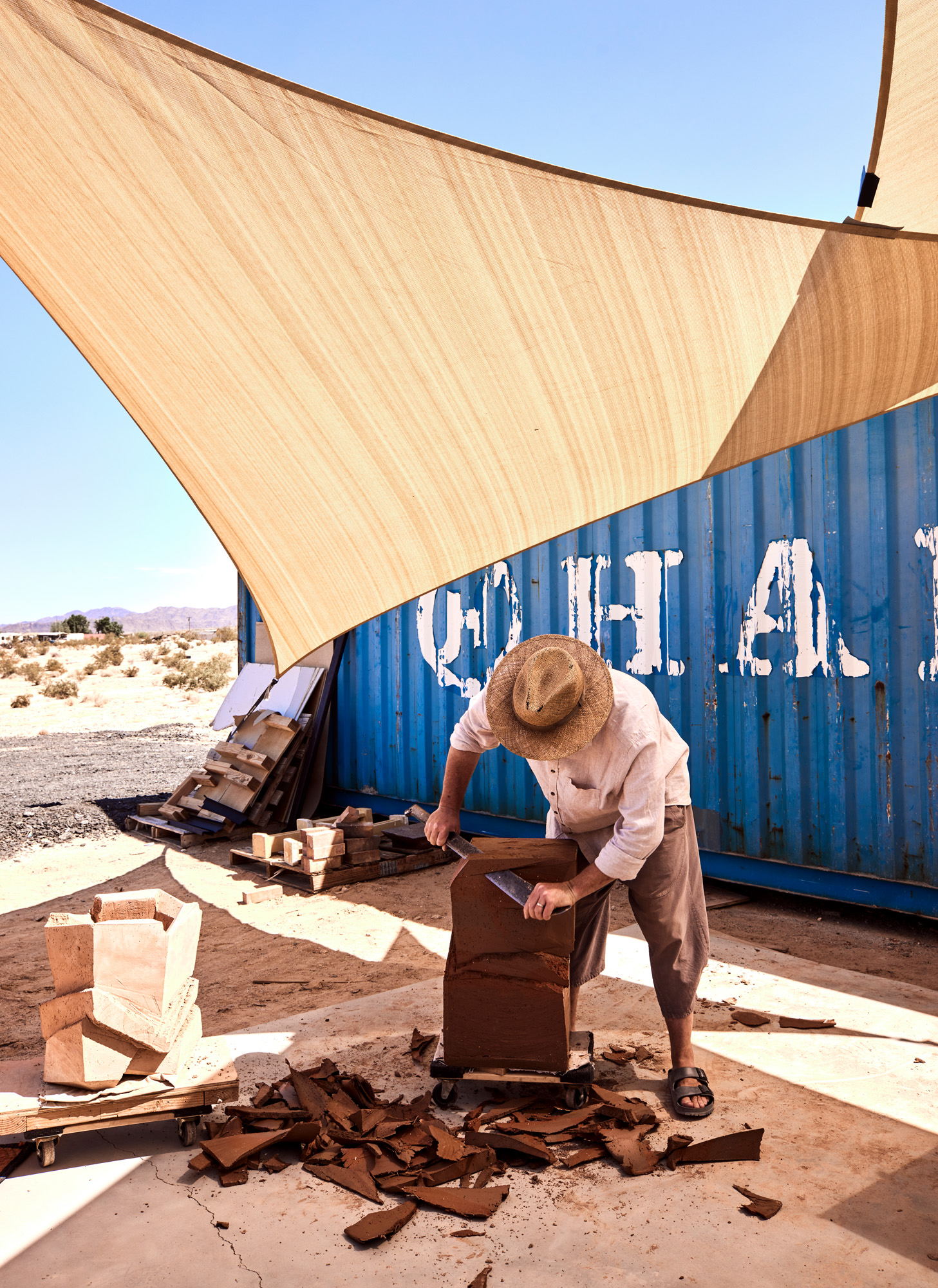
Cross hand-carves a solid block of desert clay with a machete to form a side table. Inspired by the natural surroundings, as well as 1980s sci-fi, and archaeology, his designs evoke ancient geological shapes reimagined for the modern era
While Cross admits that Twentynine Palms ‘is not my ideal location’, joking that ‘it’s a little hot’, he cherishes being able to work in the desert. ‘It’s dry, and it’s clean and not cluttered,’ he says. It also provides a range of material that especially suits his creative process.
Cross works with a specific mix of natural and commercial clay that produces memorable tones when mixed with stones, sand and other materials that he adds to the wood kiln to create his signature surfaces. He plans to crush locally found granite rock and mix it with the clay to see what effects that throws up.
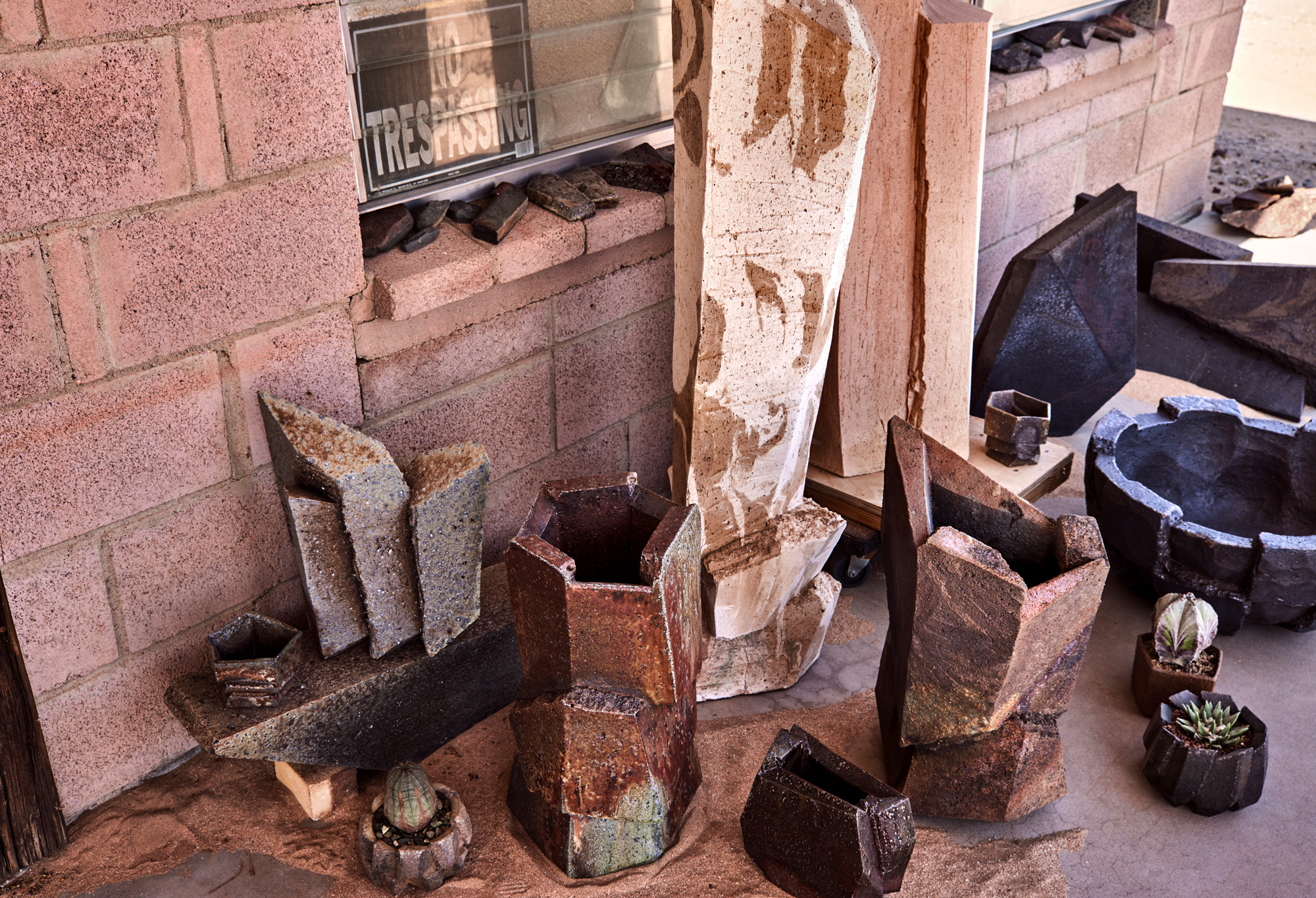
Some recently fired ceramic works displayed on the front porch of the artist’s desert studio. Cross first started working with clay to create unique planters for his own collection of cacti and succulents
‘The stones interact with the clay and the ash to create interesting surfaces,’ he explains. Although he glazes some of the interiors of his vases and cups to support their ability to hold water, he takes a less conventional approach for the exteriors, with no separate glaze firing.
‘There’s a gas-burning kiln where I spray the glaze into – it’s a saltwater solution that melts and forms a sodium glaze on the clay’s surface. I also have a large wood-burning kiln, in which the ash accumulates on the surface of the clay and, at a certain temperature, it melts into it. That also creates surfaces and patinas through the interaction with wood ash.’
Receive our daily digest of inspiration, escapism and design stories from around the world direct to your inbox.

Cross’ yard comprises a wood-burning and a gas kiln, both designed and built by the artist
This is just one aspect of the energetic dialogue between Cross’ creations and the natural world. His earliest forays into clay were to create planters for his own collection of unusual cacti and succulents (he has also created bonsai planters for a Casa Perfect exhibition with Ryan Neil). ‘I was making them for myself because I couldn’t find any interesting ones to buy,’ he recalls of his own series.
‘They were originally a secondary thing to the plants that I was collecting, but now the ceramics are the primary interest. I was making regular planters for a long time, very minimal shapes, which is the foundation of what I do, but I was once on a hike where the trail was blocked by a boulder, and when we got to the other side, there was a little shelf that had been cleaved off and a bowl of space filled with three-inch gravel. A bird had put a seed into the middle of that bowl and a cactus was growing out of it, and I realised that this four- or five-tonne boulder was a planter, and that I should be doing stuff like this. That’s when I started shifting away from just making a planter for the plant, but making spaces for them.’
Cross’ ceramics capture the austere and mysterious beauty of nature. Intuitively shaped, all of his forms are a fusion of influences from his childhood. ‘I grew up in the 1980s [amid] post-apocalyptic sci-fi, cartoons and anime. A lot of that is very graphic, with bold forms, silhouettes and outlines, but all of it feels used and run down,’ he says, while adding, ‘I was fortunate enough to inherit my great grandparents’ collection of National Geographic from the early 1900s, so as a kid, I was constantly looking at archaeology and old civilisations being dug up from the ground. A lot of that architecture and design is very strong and minimal, and has had time to erode. The surfaces have been eaten into and the corners have been chipped off.’
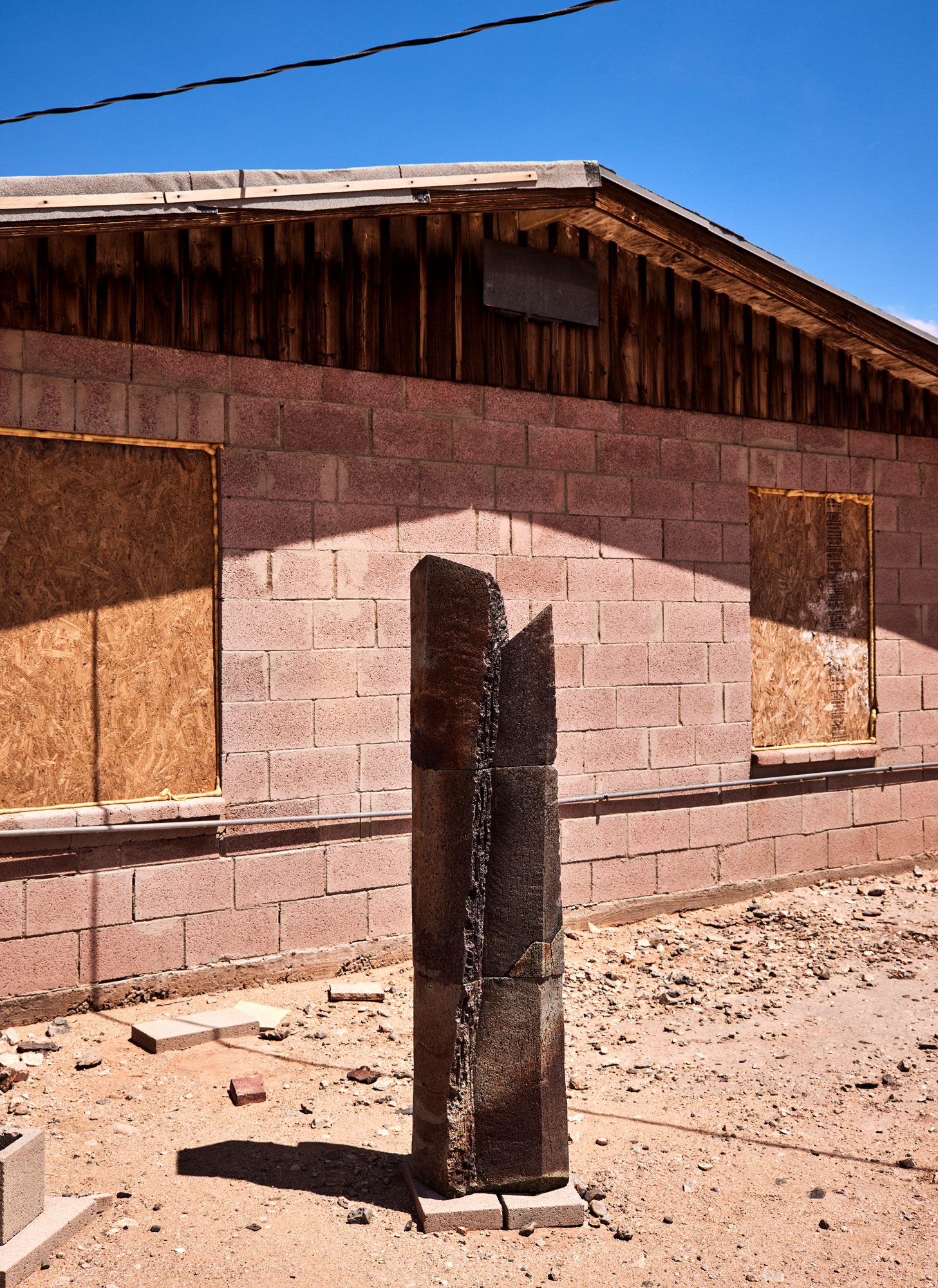
A large wood-fired sculptural pillar next to the pink cinder-block façade of Cross’ studio
This melange of influences also echoes through Cross’ professional background. He originally studied printmaking at the University of Dallas in Texas and worked at the prestigious Gemini GEL printshop after moving to LA, where he honed his graphic sensibility.
After a period of working with the ceramic artist Don Reitz, Cross decided to pursue an MFA in ceramics at Arizona State University and focus on his practice full-time. Today, his work, which even includes furniture, is available through The Future Perfect.
While his artistic practice is about pure experimentation in form, Cross enjoys working within the parameters that design and utility offer up to the creative process as well.
‘The same intent goes into both of them. It took a long time for The Future Perfect to convince me to make side tables and stools, because the aesthetic is very similar to the sculpture. It’s silly that for one, you can put your butt on it, but for the other, you’re not supposed to. My integrity stays the same when creating both.’
This article appears in the October 2023 issue of Wallpaper*, available in print, on the Wallpaper* app on Apple iOS, and to subscribers of Apple News +. Subscribe to Wallpaper* today
Pei-Ru Keh is a former US Editor at Wallpaper*. Born and raised in Singapore, she has been a New Yorker since 2013. Pei-Ru held various titles at Wallpaper* between 2007 and 2023. She reports on design, tech, art, architecture, fashion, beauty and lifestyle happenings in the United States, both in print and digitally. Pei-Ru took a key role in championing diversity and representation within Wallpaper's content pillars, actively seeking out stories that reflect a wide range of perspectives. She lives in Brooklyn with her husband and two children, and is currently learning how to drive.
-
 This cult Los Angeles pop-up restaurant now has a permanent address
This cult Los Angeles pop-up restaurant now has a permanent addressChef Brian Baik’s Corridor 109 makes its permanent debut in Melrose Hill. No surprise, it's now one of the hardest tables in town to book
-
 French bistro restaurant Maset channels the ease of the Mediterranean in London
French bistro restaurant Maset channels the ease of the Mediterranean in LondonThis Marylebone restaurant is shaped by the coastal flavours, materials and rhythms of southern France
-
 How ethical is Google Street View, asks Jon Rafman in Copenhagen
How ethical is Google Street View, asks Jon Rafman in CopenhagenIn 'Report a Concern - the Nine Eyes Archives' at Louisiana Museum of Art, Copenhagen, Jon Rafman considers technology's existential implications
-
 Nadia Lee Cohen distils a distant American memory into an unflinching new photo book
Nadia Lee Cohen distils a distant American memory into an unflinching new photo book‘Holy Ohio’ documents the British photographer and filmmaker’s personal journey as she reconnects with distant family and her earliest American memories
-
 Ed Ruscha’s foray into chocolate is sweet, smart and very American
Ed Ruscha’s foray into chocolate is sweet, smart and very AmericanArt and chocolate combine deliciously in ‘Made in California’, a project from the artist with andSons Chocolatiers
-
 Jamel Shabazz’s photographs are a love letter to Prospect Park
Jamel Shabazz’s photographs are a love letter to Prospect ParkIn a new book, ‘Prospect Park: Photographs of a Brooklyn Oasis, 1980 to 2025’, Jamel Shabazz discovers a warmer side of human nature
-
 The Hammer Museum in Los Angeles launches the seventh iteration of its highly anticipated artist biennial
The Hammer Museum in Los Angeles launches the seventh iteration of its highly anticipated artist biennialOne of the gallery's flagship exhibitions, Made in LA showcases the breadth and depth of the city's contemporary art scene
-
 Thomas Prior’s photography captures the uncanny fragility of American life
Thomas Prior’s photography captures the uncanny fragility of American lifeA new book unites two decades of the photographer’s piercing, uneasy work
-
 Central Park’s revitalised Delacorte Theater gears up for a new future
Central Park’s revitalised Delacorte Theater gears up for a new futureEnnead Architects helmed an ambitious renovation process that has given the New York City cultural landmark a vibrant and more accessible future
-
 Stephen Prina borrows from pop, classical and modern music: now MoMA pays tribute to his performance work
Stephen Prina borrows from pop, classical and modern music: now MoMA pays tribute to his performance work‘Stephen Prina: A Lick and a Promise’ recalls the artist, musician, and composer’s performances, and is presented throughout MoMA. Prina tells us more
-
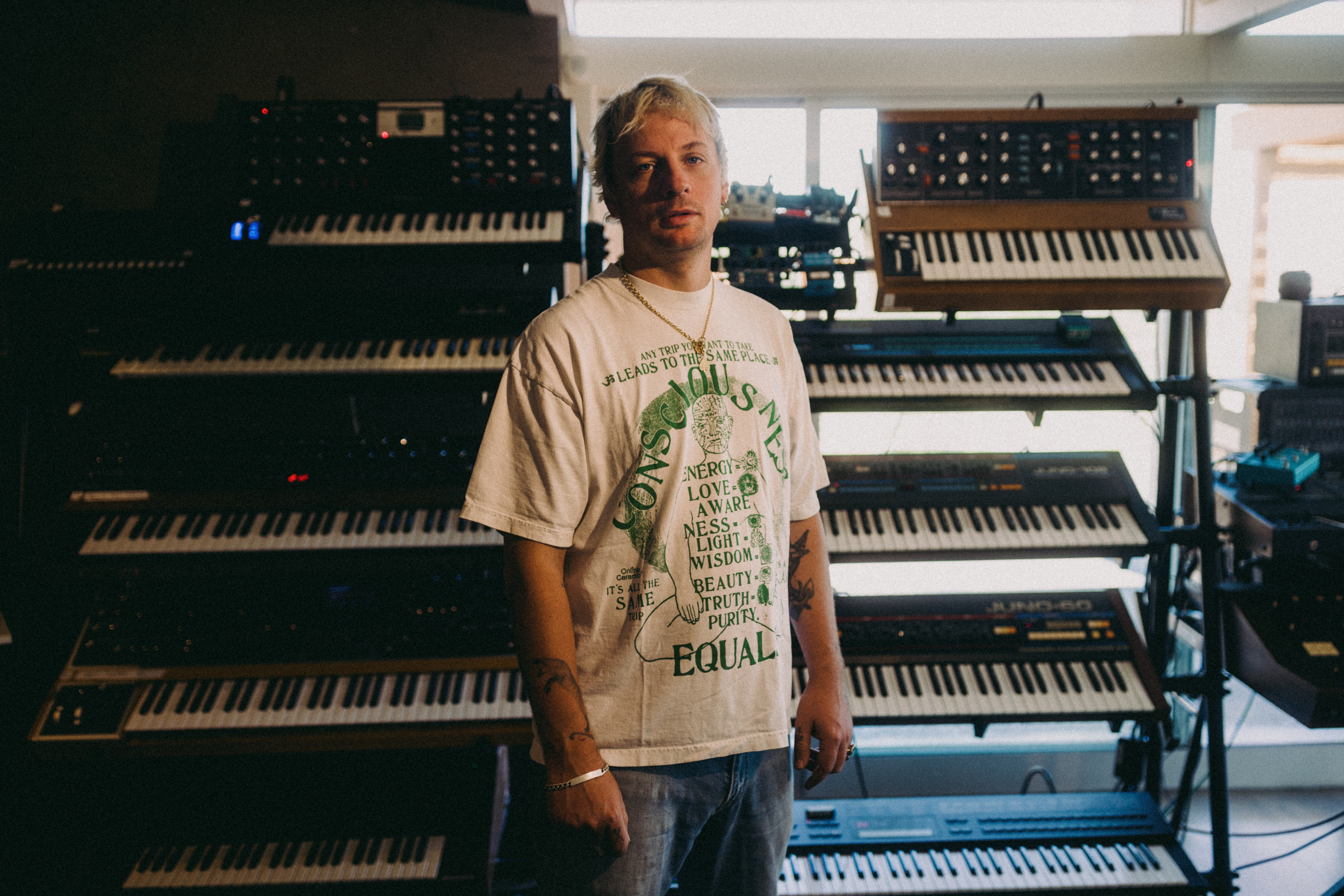 Curtains up, Kid Harpoon rethinks the sound of Broadway production ‘Art’
Curtains up, Kid Harpoon rethinks the sound of Broadway production ‘Art’He’s crafted hits with Harry Styles and Miley Cyrus; now songwriter and producer Kid Harpoon (aka Tom Hull) tells us about composing the music for the new, all-star Broadway revival of Yasmina Reza’s play ‘Art’